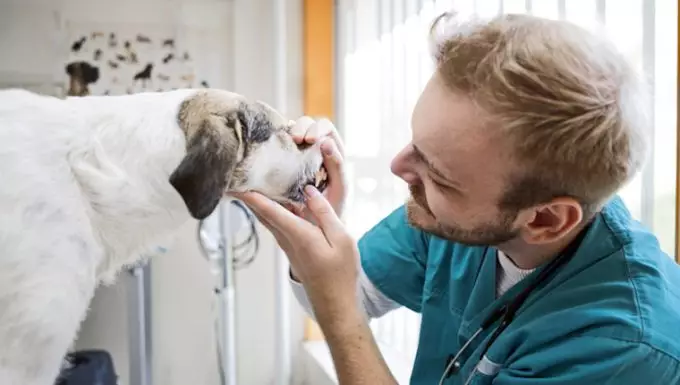Oral chondrosarcoma is a serious but often overlooked type of bone cancer that primarily affects dogs. With a specific focus on tumor development in the cartilage, this condition can lead to severe health issues, particularly in large breed dogs and those in their middle to senior years. While it remains a relatively rare form of cancer, awareness and early detection can be crucial in managing its effects on canine health.
The signs of oral chondrosarcoma can be varied and may often be mistaken for other dental issues. Pet owners should be vigilant for indicators such as persistent bad breath, noticeable weight loss, and swollen lymph nodes. Additionally, dogs affected by this condition may experience excessive drooling, have trouble eating, or show symptoms of mouth bleeding. Lethargy, coughing, and sneezing can also accompany these signs, further complicating the dog’s overall health picture. Recognizing these symptoms early can lead to timely veterinary intervention, which is vital for a better prognosis.
The exact cause of oral chondrosarcoma remains a mystery, described as idiopathic, meaning that no specific source has been identified. However, certain trends have been observed: larger breeds are more likely to develop this type of cancer compared to their smaller counterparts. Additionally, the condition shows a higher prevalence in middle-aged to older dogs, with a slightly greater incidence in males than females. Understanding these patterns may assist veterinarians and pet owners in recognizing at-risk populations and advocating for regular health check-ups.
If signs of oral chondrosarcoma are present, it is essential to seek veterinary care promptly. The diagnostic process typically starts with the veterinarian gathering comprehensive information about the dog’s symptoms and medical history, paying special attention to breed-specific issues. Following a thorough physical examination, diagnostic imaging, such as X-rays, can aid in identifying any anomalies. Ultimately, a definitive diagnosis often requires a deep tissue biopsy to confirm the presence of chondrosarcoma, allowing for appropriate treatment planning.
The primary approach to treating oral chondrosarcoma involves surgical intervention aimed at removing the tumor. In more severe cases, this can include the surgical excision of parts of the jaw, which underscores the need for skilled veterinary care. Lastly, post-surgery, pain management is crucial, and veterinarians will prescribe relevant medication to ensure a smoother recovery. It is essential for caregivers to adhere to dosing instructions to support their dog’s healing process effectively. During recovery at home, creating a tranquil environment for the dog can aid in a more comfortable recuperation. Limiting physical activity initially can also promote healing and well-being.
While oral chondrosarcoma in dogs is a grave condition, understanding its symptoms, causes, and treatment options can empower pet owners to take proactive steps in safeguarding their companions’ health. Regular veterinary visits and acute awareness of changes in a dog’s behavior or health can significantly influence the outcome of this disease. If you have experienced caring for a dog with this condition, sharing your insights can help others better navigate the challenges associated with oral chondrosarcoma.

